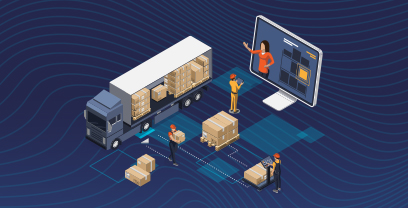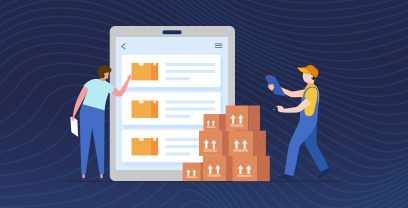A recent study from Forrester Consulting, commissioned by Ivalua, found that only 13% of businesses identify as leaders when it comes to supplier management – in other words, having formal programs that are broadly applied across the supply base. This is a big problem.
Why? Because without robust supplier management programs, businesses face increased risks of supply chain disruptions, compliance issues, and missed opportunities for cost savings and innovation.
Effective supplier management is critical for maintaining quality, mitigating risks, and ensuring resilience, especially in an era where supply chains are increasingly complex and vulnerable to global uncertainties.
In this guide, we take an in-depth look at supplier management, including benefits and challenges, and provide strategies and best practices to ensure your organization can build stronger supplier relationships, improve performance, reduce risks, and drive greater value across the supply chain.
What is Supplier Management?
Supplier management – or vendor management – is a strategic process focused on managing a supplier network including relationships, performance, and risks associated with suppliers to optimize procurement and supply chain operations. It plays a central role in ensuring that organizations can source high-quality goods and services at the right cost, maintain operational efficiency, and adapt to changing market dynamics.
Supplier management is a critical function within procurement and supply chain operations, as it directly influences the quality, cost, and reliability of the products and services an organization sources. Beyond simply managing transactions, supplier management requires cultivating long-term, collaborative relationships that drive innovation and enhance an organization’s resilience.
Managing suppliers includes:
- Sourcing: Identifying and engaging potential suppliers through market research to ensure they can meet organizational needs.
- Evaluation: Assessing potential suppliers’ capabilities, financial stability, quality standards, compliance, and alignment with organizational values.
- Selection: Choosing suppliers based on quality, cost, and service, using competitive bidding, negotiations, and clear contract terms.
- Monitoring: Tracking supplier performance through regular audits and metrics to ensure compliance with contractual obligations and quality standards.
Why are robust, long-term supplier relationships important?
Holistic supplier management is critical for businesses aiming to achieve cost efficiency, agility, and risk mitigation across their supply chains. A holistic approach contributes to overall business strategy by:
- Establishing Supply Assurance and Mitigating Disruptions: By proactively managing suppliers, businesses can secure consistent access to quality goods and services, reducing the risk of supply disruptions that can impact production and customer satisfaction.
- Building More Resilient Supply Chains that Withstand Volatility: Handling supplier relationships effectively helps businesses to identify potential vulnerabilities early and develop contingency plans, making the supply chain more resilient to global market shifts, geopolitical tensions, or natural disasters.
- Supporting Growth Plans with New Product Innovation or Market Entry: Supplier management plays a pivotal role in aligning procurement with growth objectives, such as launching new products or entering new markets, by fostering collaborative relationships that drive innovation and open doors to new opportunities.
- Advancing Sustainability Initiatives to Reduce Scope 3 Carbon Emissions: Strong and effective supplier relationships facilitate collaboration towards shared sustainability goals, reducing emissions and encouraging responsible sourcing practices throughout the supply chain.
- Ensuring Accurate and Quality Supplier Master Data: Maintaining reliable and up-to-date supplier data supports informed decision-making, enhances compliance, and enables better negotiation and risk management.
Ultimately, a strategic approach to supplier management not only helps control costs and improve agility but also aligns with broader organizational goals related to innovation, growth, and sustainability.
Integrated, holistic supplier management creates sustained value. Check out our on-demand webinar on holistic supplier management to learn more about its benefits.
Key Components of aSupplier Management System throughout the Supplier Lifecycle
The relationship with a supplier unfolds across multiple stages. A powerful Supplier Management System ensures effective collaboration throughout the supplier lifecycle, from supplier onboarding to renewal or exit, fostering long-term value, and aligning supplier contributions with organizational objectives.
Supplier Onboarding
Supplier onboarding is the foundational step in the framework, focusing on the smooth integration of new suppliers into the organization’s systems and processes. It includes vetting potential suppliers, collecting essential documentation, setting up contracts, defining performance metrics, and ensuring compliance with regulatory requirements. Efficient onboarding ensures a faster time to value, minimizes onboarding errors, and sets clear expectations from the start.
Supplier Collaboration & Enablement
Collaboration and enablement emphasize the importance of building open, two-way communication with suppliers. This component aims to foster partnerships that go beyond transactional interactions, encouraging innovation, process improvements, and joint problem-solving. It may include shared planning sessions, co-development projects, and training initiatives to equip suppliers with the necessary tools and skills to meet evolving business requirements.
Supplier Information Management (SIM)
Supplier Information Management (SIM) ensures the accuracy, quality, and accessibility of supplier data throughout the relationship. It involves maintaining up-to-date records of supplier details, performance metrics, compliance status, and risk profiles. A strong SIM system supports informed decision-making, improves compliance, and enhances overall supply chain visibility, allowing organizations to respond more effectively to market changes or risks.
Supplier Relationship Management (SRM)
Supplier Relationship Management (SRM) focuses on nurturing long-term, strategic relationships with key suppliers. It involves regular communication, performance reviews, and joint initiatives to strengthen trust, align goals, and drive value. SRM aims to move from transactional to collaborative relationships, leveraging supplier insights for innovation, cost optimization, and sustainable growth.
Supplier Performance Evaluation
This component involves the ongoing assessment of supplier performance against predefined criteria, such as quality, delivery, cost, and compliance. Supplier performance evaluation is critical for identifying both strengths and areas for improvement. By tracking performance regularly, organizations can provide feedback, address issues promptly, and make informed decisions about contract renewals, negotiations, or potential supplier replacements.
Supplier Lifecycle Management
Supplier lifecycle management oversees the entire supplier journey—from initial engagement to potential exit. It includes managing key milestones, performance metrics, compliance checks, and risk assessments across the lifecycle.
Holistic SLM ensures that suppliers continuously meet business needs and can adapt to changes in requirements, regulations, or market conditions. Effective lifecycle management helps maximize supplier value while minimizing risks throughout the relationship.
In our blog on Supplier Performance Management (SPM), we discuss the steps and best practices for implementing SPM, and how technology simplifies the process.
Challenges in Supplier Management
Supplier management comes with a range of challenges that can hinder effectiveness. For example, Forrester’s study found that 49% of leaders said a lack of systems that enable efficient and scalable supply chain collaboration limits their ability to manage suppliers effectively. Resistance to digital transformation, where both internal teams and suppliers may prefer traditional methods, can slow the adoption of new systems and limit such collaboration.
Another significant issue is the lack of supplier visibility. Insufficient insights into suppliers’ processes and performance make informed decision-making difficult. This is compounded by data management and transparency issues, as fragmented or inaccurate data can lead to compliance risks and missed opportunities for cost or quality improvements.
Cultural and geographical barriers – such as differences in language, time zones, and cultural norms – can cause communication gaps and misaligned expectations, impacting supplier relationships. Meanwhile, global supply chain disruptions from geopolitical tensions, natural disasters, or pandemics can create sudden shortages or logistic bottlenecks.
Balancing cost, quality, and agility is a persistent challenge, as well. Additionally, managing supplier risk and compliance is resource-intensive, requiring organizations to navigate varying regulations, standards, and geopolitical uncertainties across a diverse supplier base.
Fortunately, there are steps you can take to tackle these persistent challenges.
5 Steps For Modernizing Supplier Management
The following steps outline essential strategies to overcome common challenges, optimize supplier relationships, and build a more resilient supply chain:
- Gain Control of Supplier Data: Organizations often face scattered, error-prone supplier data across systems, making it hard to track spending accurately. While spend analysis tools help rationalize data, they don’t address root issues. Implementing vendor master data management (MDM), ideally integrated with spend management suites, unifies data and corrects inaccuracies at the source.
- Enable 360-Degree Visibility: Achieving full visibility requires insights into supplier risk, performance, and ESG compliance for both new and existing suppliers. Many advanced organizations struggle with fragmented S2P systems that create data silos. A more effective approach is a hub-and-spoke model, using a central platform that unifies supplier data and integrates external sources like financial scores. Leaders must evaluate integrated suites to ensure seamless data unification and scalability.
- Map Your Sub-Tier: Most supply chain risks, including disruptions and ethical issues, exist in sub-tier suppliers, where visibility is often lacking. S2P technology can automate sub-tier mapping, enriching data with risk metrics and identifying common dependencies to enhance risk assessment.
- Enable Effective, Scalable Collaboration: Collaboration should span the entire supplier lifecycle, from new product planning to payments, supported by digital tools that allow secure information sharing and joint action plans. Meritor, for instance, digitized its full supplier lifecycle to improve collaboration and accelerate product launches.
- Incentivize the Right Behavior: Procurement KPIs should reward sustainability, reduced disruptions, and innovations rather than just cost-cutting. Suppliers, too, need incentives to innovate and collaborate, such as timely payments, flexibility, and access to needed systems. A customer-of-choice program can help foster transparency and mutual benefits.
Download Forrester’s report, “Chain Reaction: Holistic Supplier Management is Key to Business Success,” to learn more about these strategies.
Helping San Diego Streamline Supplier Management
The County of San Diego Department of Purchasing and Contracting serves over 3 million residents, supporting 48 departments with essential goods and services. Facing challenges with limited visibility due to an in-house BuyNet system that lacked crucial supplier data on business size and demographics, they struggled with comprehensive supplier evaluation.
In partnership with Ivalua, the county implemented a Best Value Sourcing approach to improve decision-making, using a centralized data source for better supplier outreach and evaluation. This collaboration also granted the department access to a public sector community for knowledge sharing and support, fostering collaboration and broadening engagement with diverse vendors across the region.
“The Ivalua Supplier Relationship Model has been a key part of our strategy to engage with the community and small businesses in our region.”
Jack Pellegrino, Director of Purchasing and Contracting, County on San Diego, CA
Read the full San Diego case study.
How Ivalua’s Supplier Management Solutions Enable Effective Supplier Management
Ivalua’s supplier management solutions empower organizations to manage all suppliers and spend through a single, unified platform that drives visibility, efficiency, and collaboration.
As noted by Forrester, “Ivalua’s strategy is to help clients manage all their spend with all their suppliers via one unified SVM platform, underpinned by transparency, adoption, efficiency, and collaboration.” This comprehensive approach simplifies complex supplier networks and supports strategic objectives, from compliance to innovation.
Key Features of Ivalua’s Supplier Management Software include:
- Ivalua’s robust supplier portals enable seamless communication, collaboration, and data exchange, and provide suppliers with direct access to manage their profiles, update certifications, and participate in performance evaluations
- Ivalua leverages generative AI to optimize supplier management by analyzing historical data, predicting risks, and suggesting improvements in supplier selection and collaboration.
- Ivalua maintains a single record per supplier, integrating information from various sources to ensure data accuracy and consistency, and support holistic performance evaluation, compliance monitoring, and risk assessment.
- Ivalua’s analytics capabilities allow users to track performance, compliance, risk metrics, and sustainability initiatives in real time. Customizable dashboards provide actionable insights, enabling organizations to make informed decisions quickly.
For more detailed information about Ivalua’s supplier management solutions, download our Supplier Management Datasheet.
Transform Supplier Management with Ivalua
Effective supplier management is essential for improving performance, reducing risks, and driving innovation across supply chains. Key strategies include gaining control of supplier data, enabling 360-degree visibility, mapping sub-tiers, fostering collaboration, and incentivizing desired behaviors. Success requires a continuous commitment to refining processes and leveraging technology.
To develop a strong supplier management strategy, start by adopting a unified platform like Ivalua’s that offers comprehensive tools and insights. Ready to transform your supplier management approach? Explore our Supplier Management Demo and see Ivalua in action.




